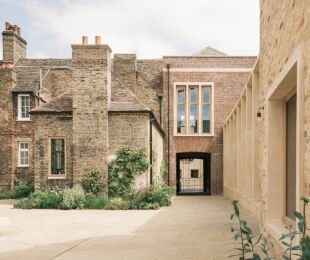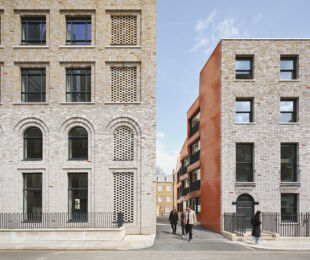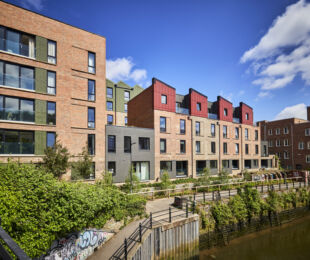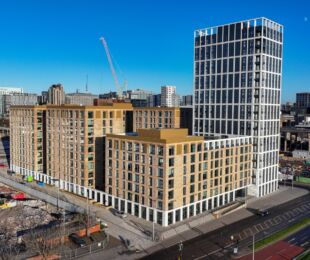
Wienerberger’s Renatus project offers a real-world example of energy-efficient retrofit using traditional materials and modern techniques
Improving the energy efficiency of the UK’s existing homes is a national priority. With millions of properties built long before today’s thermal standards, retrofit is essential. The Renatus project, delivered by Wienerberger in partnership with ThamesWey Group, illustrates how clay brick can be used effectively in this context.
Focusing on two post-war semi-detached bungalows in Woking, the project took a straightforward, fabric-first approach to upgrading thermal performance and reducing energy use, while maintaining build quality and practical functionality.
Understanding the Retrofit Challenge
The UK’s housing stock includes many homes that are difficult to heat and expensive to maintain. The two properties involved in the Renatus project were originally rated EPC E and F, indicating poor thermal performance and high running costs.
Rather than demolishing and rebuilding, the project team chose to retain and upgrade the existing structures, using materials that could deliver reliable thermal performance, manage moisture effectively and support long-term durability.
Practical Use of Brick in Energy Retrofit
Clay brick was central to the construction strategy, not only for its visual continuity with neighbouring buildings, but also for its role in improving thermal performance and reducing ongoing maintenance requirements. Key materials included:
- Porotherm Cellular Clay Blocks: Replacing standard concrete blockwork, these clay blocks offer better thermal performance, helping stabilise internal temperatures and reduces the carbon-footprint.
- EcoBrick Format: The 65mm-wide bricks enabled wider wall cavities, allowing for thicker insulation and improved U-values within conventional wall depths.
- Well-detailed external brick skin: Combined with new high-performance glazing, this improved both airtightness and external appearance.
The choice of these products was guided by performance characteristics and buildability, rather than novelty or aesthetic trend.
Systems and Technologies Chosen for Performance
To support the fabric upgrades, a series of technologies were specified based on their effectiveness in domestic retrofit settings:
- Solar PV systems with battery storage: Installed to generate on-site electricity and reduce grid demand during peak times.
- Air source heat pumps with underfloor heating: Replacing older systems, these offer a more efficient means of heating, particularly in well-insulated homes.
- Moisture-sensitive mechanical ventilation: Helping to maintain indoor air quality while minimising energy loss.
- Rainwater harvesting: Systems installed to reduce potable water use for external or greywater applications.
- Air-tight membranes: Used to reduce uncontrolled ventilation and heat loss at critical junctions.
Improving Landscape and Biodiversity Features
While the primary goal was thermal improvement, external works were also undertaken, including:
Wild planting and landscaping: Enhancing the outlook for residents and contributing to biodiversity on-site.
Low-maintenance surfaces and materials: To keep costs and intervention needs down over the long term.
These features were incorporated as part of a standard planning and placemaking approach, not as headline sustainability measures.
Measurable Outcomes
The success of the Renatus project lies in its practical, measurable results:
EPC ratings improved from E and F to A and B respectively. Heating bills reduced significantly due to improved insulation and low-carbon heating. Carbon emissions lowered, reflecting both operational savings and a reduced need for remedial work in future years. The homes remain familiar in form and materials, supporting integration within their local context.
These results are based on post-works assessment and available energy data, demonstrating a clear improvement in building performance.
Focused, Fabric-First Retrofit Using Brick
The Renatus project demonstrates that brick-based construction systems can play a meaningful role in the UK's national retrofit effort. By combining proven materials with well-planned upgrades and attention to detail, the project team delivered homes that are more comfortable to live in, cost less to run, and demand less frequent maintenance.
Crucially, the project avoided unnecessary demolition and speculative technologies, instead focusing on what works - with brick playing a central part in a practical, long-term solution.
Brick Bulletin | Feature 257






